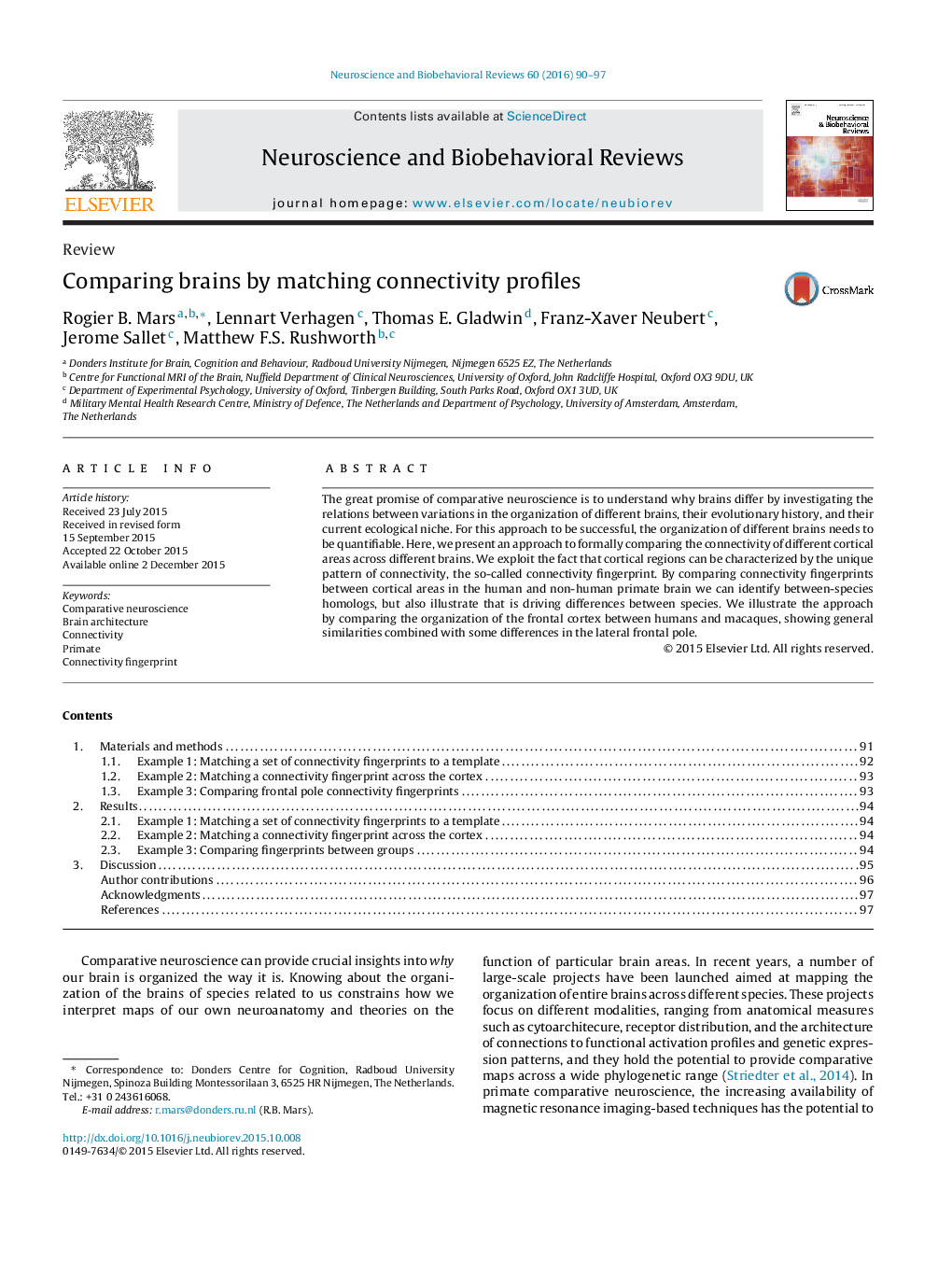| Article ID | Journal | Published Year | Pages | File Type |
|---|---|---|---|---|
| 7303145 | Neuroscience & Biobehavioral Reviews | 2016 | 8 Pages |
Abstract
The great promise of comparative neuroscience is to understand why brains differ by investigating the relations between variations in the organization of different brains, their evolutionary history, and their current ecological niche. For this approach to be successful, the organization of different brains needs to be quantifiable. Here, we present an approach to formally comparing the connectivity of different cortical areas across different brains. We exploit the fact that cortical regions can be characterized by the unique pattern of connectivity, the so-called connectivity fingerprint. By comparing connectivity fingerprints between cortical areas in the human and non-human primate brain we can identify between-species homologs, but also illustrate that is driving differences between species. We illustrate the approach by comparing the organization of the frontal cortex between humans and macaques, showing general similarities combined with some differences in the lateral frontal pole.
Related Topics
Life Sciences
Neuroscience
Behavioral Neuroscience
Authors
Rogier B. Mars, Lennart Verhagen, Thomas E. Gladwin, Franz-Xaver Neubert, Jerome Sallet, Matthew F.S. Rushworth,
